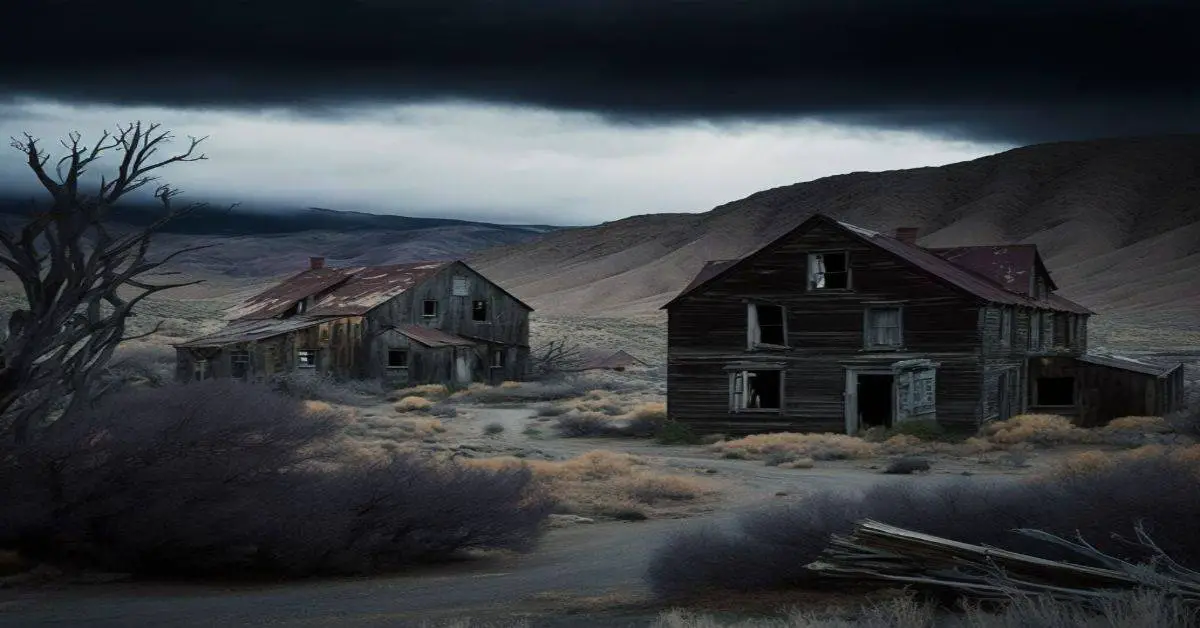Austin, a semi-ghost town located in Lander County, Nevada, is a hidden gem for those interested in the history of the American West. Its discovery in 1862 by W.H. Talbott’s horse led to a silver rush in 1863, making it a bustling activity hub.
At its peak, Austin boasted schools, churches, hotels, stores, saloons, and pleasure houses, with many original adobe and brick structures still standing today. Despite facing natural disasters and mine exhaustion, Austin’s vintage flavor has been preserved by its original buildings, making it a must-visit destination.
This article aims to explore the history of Austin, from its discovery to its boom and bust days, and how it has been preserved as a tourist destination. By delving into the past, readers will gain insight into the silver rush era, the challenges faced by the town, and how it has adapted to changing times.
With its unique mix of original buildings and natural beauty, Austin offers a glimpse into the past and a chance to experience the rich history of the American West.
Key Takeaways
- Austin was discovered in 1862 by W.H. Talbott’s horse and experienced a silver rush in 1863.
- The town reached its peak with schools, churches, hotels, stores, saloons, and pleasure houses, but the exhaustion of the mines by 1880 led to its decline and bust.
- Preservation and tourism efforts have been implemented to revitalize Austin, including sustainability measures and local community involvement.
- Austin’s cultural impact includes many original adobe and brick structures, the International Hotel, and the town’s competition with Clifton.
History and Discovery
The history and discovery of Austin, a semi-ghost town located in Lander County, Nevada, can be traced back to 1862 when W.H. Talbott’s horse discovered it. This led to a silver rush in 1863, attracting a population of 10,000 people who developed an infrastructure of schools, churches, hotels, stores, saloons, and pleasure houses.
The town’s architectural significance is seen in the many original adobe and brick structures that still stand today, retaining a vintage flavor of the past. Austin’s cultural impact is evident in the many landmarks that have survived over the years, such as the International Hotel which was moved from Virginia City and still stands as a testament to the town’s history.
The town’s competition with Clifton, which was abandoned when Austin won the county seat in 1863, is also a part of its cultural legacy. While natural disasters such as floods and occasional cloudbursts have plagued the town over the years, it has managed to retain its historic charm and continues to attract visitors who are interested in exploring its rich history.
Boom and Bust
After the silver rush in 1863, Austin experienced a period of rapid growth with a population of 10,000 people, but the exhaustion of the mines by 1880 led to its decline. The mining industry was Austin’s main source of economic activity during its boom years. It attracted people from all over, establishing schools, churches, hotels, stores, saloons, and pleasure houses. However, the mines eventually became exhausted, and the boom halted, leading to the town’s decline.
The boom and bust cycle experienced by Austin is common in many mining towns. The following are some significant impacts of this cycle:
- Economic instability: When a town is dependent on a single industry, such as mining, it becomes vulnerable to fluctuations in that industry. The boom and bust cycle can lead to economic instability, as the town’s economy becomes dependent on the mining industry’s success.
- Social change: During the boom years, a town experiences rapid growth and development, resulting in the establishment of institutions such as schools, churches, and hotels. However, during the bust years, the town experiences a population decline, leading to social changes such as the closure of schools and churches.
- Environmental impact: Mining can have significant environmental impacts, such as deforestation, soil erosion, and water pollution. The boom and bust cycle can exacerbate these impacts, as companies may not take adequate measures to restore the environment during the bust years.
Preservation and Tourism
Preservation and tourism have become crucial aspects of the revitalization plan for Austin, given its historical significance and vintage flavor retained by many original buildings. Efforts towards sustainability have been put in place to ensure that the town’s heritage is preserved for future generations.
One such effort is using renewable energy sources, such as solar and wind power, to reduce the town’s carbon footprint. Additionally, the town has implemented a recycling program and encourages visitors to minimize their waste.
Local community involvement has also played a significant role in the preservation and promotion of Austin. The town’s residents have formed a historical society to document and showcase the town’s rich history. They have also organized events such as the annual Austin Fly-In, which brings aviation enthusiasts together to celebrate the town’s connection to early aviation.
By involving the local community in preservation and tourism efforts, Austin has retained its vintage charm while attracting visitors from all over the world.
Frequently Asked Questions
Are there any notable events or festivals held in Austin throughout the year?
The given information does not mention upcoming events and local cuisine in Austin. However, the town’s historic buildings and vintage flavor may provide a unique backdrop for potential festivals or culinary experiences.
What is the current economic situation in Austin? Are there any major industries or businesses?
Austin, Nevada’s economy heavily relies on tourism due to its historical significance and well-preserved buildings. The area has no major industries or businesses, but the town’s vintage flavor attracts visitors year-round.
Is there a specific area or neighborhood in Austin that is recommended for tourists to visit?
Top attractions in Austin for tourists include exploring the historic buildings, such as the International Hotel, and visiting the town’s museums. The best neighborhoods to explore in Austin are Main Street and its surrounding residential areas.
What is the cultural and demographic makeup of the current population in Austin?
The current population of Austin is small, around 200 people, which limits cultural diversity. However, the community is active, with regular events and activities at the local schools, churches, and community center.
Are there any notable historical figures or events associated with Austin that are not mentioned in the article?
Notable figures associated with Austin include John C. Fremont, who passed through the town in 1844, and Samuel Clemens (Mark Twain), who worked in a nearby silver mine. The town played a significant role in the silver rush of the 1860s, with many original buildings still standing today. The 1868 and 1874 floods devastated the town, and the exhaustion of mines in 1880 led to a decline in population. Despite these setbacks, Austin retains a vintage flavor and is an important cultural and historical landmark in Nevada.


